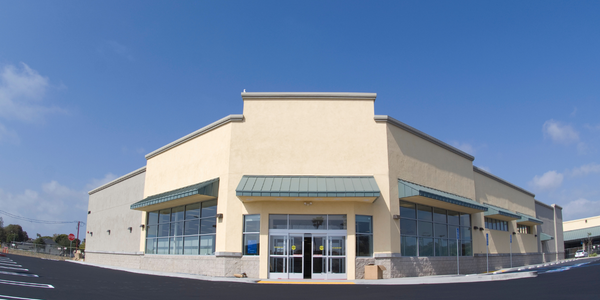Technology Category
- Application Infrastructure & Middleware - Data Exchange & Integration
- Application Infrastructure & Middleware - Middleware, SDKs & Libraries
Applicable Industries
- Apparel
Applicable Functions
- Maintenance
Use Cases
- Leasing Finance Automation
- Time Sensitive Networking
Services
- System Integration
About The Customer
FXR Racing is a Manitoba-based company that specializes in the production of high-performance apparel for competitive motocross and snowmobile racing. The company has established itself as a global supply chain leader and continues to grow through its ever-expanding product line, which includes hundreds of different style jackets, pants, gloves, boots, headwear, and casual lines. FXR Racing started its ecommerce operations on the Magento 1 Community platform but faced numerous challenges with its custom integration between Magento 1 and NetSuite, prompting a shift to Celigo’s integration solutions.
The Challenge
FXR Racing, a global supply chain leader in high-performance apparel for competitive motocross and snowmobile racing, faced significant challenges with its ecommerce operations. Initially, the company used the Magento 1 Community platform for its ecommerce operations and had developed a custom integration between Magento 1 and NetSuite through an agency. However, this custom integration was constantly breaking and required continuous maintenance. Additionally, the Magento 1 storefront was not meeting the company's needs, prompting a decision to migrate to Shopify. Furthermore, the company faced challenges with large B2B orders coming via NuOrder, which sent the entire catalog of over 65,000 SKUs and six different currencies every time it was updated. This often resulted in orders being skipped or going missing during the process. FXR also had issues with a global EDI provider, who didn’t provide the flexibility and customization needed for their operations.
The Solution
FXR Racing implemented Celigo’s Magento 1 – NetSuite Integration App to resolve many of the manual challenges they had faced with their previous integration. As the Magento 1 storefront wasn't meeting their needs, the company migrated to Shopify and implemented Celigo’s Shopify-NetSuite Integration App simultaneously. To address the challenges with NuOrder, FXR created an integration using Celigo between NuOrder and FTP. This allowed Celigo to recognize the changes from the previous file and only update the delta inside of NetSuite, saving significant time in the process. To overcome the issues with the global EDI provider, FXR used Celigo to connect two European 3PLs, Picker and Nyce, using XML. Finally, FXR leveraged Celigo for NetSuite-NetSuite automations that are typically done via SuiteScript, automating item records with a field and intercompany transactions.
Operational Impact
Quantitative Benefit

Case Study missing?
Start adding your own!
Register with your work email and create a new case study profile for your business.
Related Case Studies.

Case Study
Fire Alarm System and Remote Monitoring Sytem
Fire alarm systems are essential in providing an early warning in the event of fire. They help to save lives and protect property whilst also fulfilling the needs of insurance companies and government departments.Fire alarm systems typically consist of several inter-linked components, such as smoke detectors, heat detector, carbon monoxide, manual call points, sounders, alarm and buzzer. The fire alarm system should give immediate information in order to prevent the fire spread and protect live and property.To get maximum protection a shoe manufacturer in Indonesia opted for a new fire alarm system to monitor 13 production sites spread over 160 hectars. Although the company had an existing fire alarm system, it could not be monitored remotely.It was essential that the new system would be able to be monitored from a central control room. It needed to be able to connect to the existing smoke detector and manual call point. Information should be easily collected and passed on to the Supervisory Control and Data Acquisition (SCADA) system. Furthermore, the system should have several features such as alarm management, auto reporting, being connected to many client computers without additional cost, and run 24/7 without fails. The company also needed a system which could be implemented without changing the architecture of the existing fire alarm system.

Case Study
IoT Applications and Upgrades in Textile Plant
At any given time, the textile company’s manufacturing facility has up to 2,000 textile carts in use. These carts are pushed from room to room, carrying materials or semi-finished products. Previously, a paper with a hand-written description was attached to each cart. This traditional method of processing made product tracking extremely difficult. Additionally, making sure that every cart of materials or semi-finished products went to its correct processing work station was also a problem. Therefore, the company desired an intelligent solution for tracking assets at their factories. They also wanted a solution that would help them collect process data so they could improve their manufacturing efficiency.

Case Study
Retailer Uses RFID Scanner to Improve Efficiency
Patrizia Pepe wished to improve the logistics of their warehouse: accepting incoming goods from their production sites, movement of items throughout
the warehouse, and packaging of goods for distribution to the retail locations. They initially tried to use barcodes for this function. Because barcodes must be individually scanned within a line-of-sight, the acceptance of goods coming into the warehouse was too time consuming. Working with the University of Florence, Patrizia Pepe instituted a five-month pilot project beginning in August of 2009 to test the validity of an RFID solution. The pilot involved tagging of about 60,000 items for the second seasonal collection, and convinced the company to move forward with tagging all items.

Case Study
Monitoring and Controlling Automatic Mixing and Dispensing Machines
As technology advances, textile manufacturing has been transformed from a labor-intensive to a partially or fully automated industry. Automation is significant in all segments of textile production - from spinning to printing, and textile machinery manufacturers are constantly searching for new technologies and automation processes will increase the productivity of their machines. The color paste mixing and dispensing machine is an essential part of the printing and dyeing process. With the advantage of automatically computerized controls and database management, the system can significantly improve its dispensing precision, working efficiency and production quality as well as reducing material consumption.





